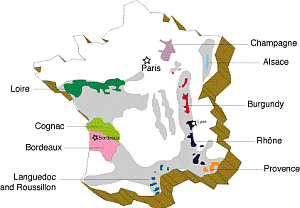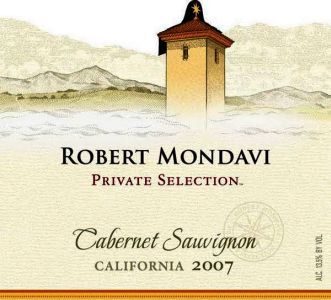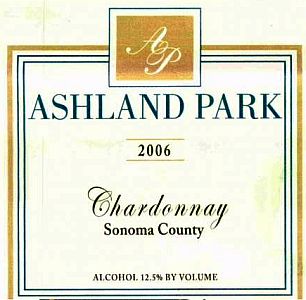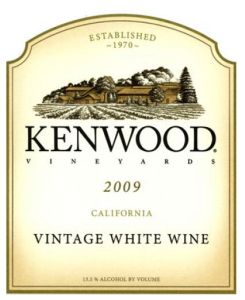WINE LABELS(What Does That Wine Label Mean?)Purchasing wine is not easy. If you like, it can be. Simply walk into a store, grab the color you want, or perhaps a familiar label, pay for it and leave. When you get home pull the cork, hope for the best and drink it. However, if you're even slightly particular, it's not that easy. For me, the pursuit of wine is a four-step process. First, whenever I visit one of my local wine merchants, I begin my quest by locating the areas dedicated to red wines. The second step is to isolate those varietals or appellations I enjoy. Third, my next determination is to find those wines which will accommodate my budget. Fourth and finally, which one of the many choices that are available for each varietal or appellation do I select? Now, the hard part has arrived. Since we personally don’t know the enologist (the professional winemaker in charge of maceration, fermenting, blending and ageing) or the producer, and there are well over 100,000, we must learn to focus our investigation on the information conveniently provided on the bottle’s label. The label reveals a great deal about the flavor and quality of the contents. Here we will try to provide an "elementary" discussion on how to read the label which will, hopefully, help you get the most value for your dollar. Wine snobs, go away. This page is not intended for you. Go huff and puff and spatter, sputter and spit with someone else. Labels from the Old World reveal the area or vineyard where the wine comes from and labels from the new world place the grape first. For example, a wine labeled "Montrachet", is from a great vineyard in Burgundy, France. It is also made from Chardonnay grapes, but you won't find Chardonnay on the label. There are basically three kinds of labels: terroir-based, varietal-based, and fantasy. Much of the information each offers is required and controlled by law. (Pronounce Terroir - Tear-WAH) An example of a terroir-based label
 This label is very informative. It provides you with a tremendous amount of information except for one. The varietal. It happens to be a Cabernet Sauvignon blend from the Bordeaux growing region, but you wouldn't know that unless you were familiar with the appellation and terroir-based labels. Have you ever bought a Merlot or Chardonnay? I’m sure you have and that means you're already familiar with the varietal labels. California pioneered this method of naming wines for the grape variety and most of the other New World producers have adopted it. Examples of varietal-based labels
As you can see, varietal-based labels are easy to understand. They provide all of the information required if you are purchasing a varietal or specific tasting wine. The Mondavi label, tells you the producer, "Private Selection" is simply a marketing term and has no legal significance, the varietal, the appellation, the vintage and in the lower right hand corner, the alcohol content. The Ashland Park label provides the producers
logo, the
producer, the vintage, the variatel, the appellation (Sonoma is located
in the North Coast Appellation of the California Appellation) and the
alcohol content.
Most Old World European wines (Italy, France, Spain, Germany) however, use terroir-based labeling. Terroir is a French word that roughly translates to “soil” and describes all the influences on the flavors and aromas in the wine that come from where the vines are grown, soil, climate, slope, etc. These wines may be made from a single grape variety or a blend. In terroir based labels of AOC or DOC/DOCG, 100% of the grapes must have come from the specified appellation. Wine Growing Regions In France  Some winemakers have found themselves so
frustrated by local
AOC/DOC wine regulations which dictate blends, vinification
techniques or ageing as prerequisites to obtaining labels that they
abandon traditional approaches and use labels based simply on
fantasy. In Italy, producers determined to make new-style
wines abandoned the terroir labels for the humble designation “vino
da tavola”. Table Wine. In Spain they use “vino de
mesa” Table Wine. In California, The AVA is not as
stringent and winemakers have taken it a step
further. The labels are not dictated by the AVA and winemakers
may produce wines using any blend of grapes they wish which were grown
anywhere within the California appellation.
This fantasy label informs you that the producer was established in 1970, their name is Kenwood, the unknown grapes were harvested in 2009, the grapes came from somewhere in California, the color is "Vintage White" and the wine contains 13.5% alcohol. The label reveals nothing about the grape or blend of grapes in the wine.
Each type of label gives different clues to the wine inside the bottle, but all labels include a few basics. For example, the producer's name is always prominent. Most wineries develop consistent signatures, based upon their location, wine making skills and marketing goals. Once you're familiar with a winery's profile, the producer's name is perhaps the most reliable indicator of wine style and quality. The wine's vintage is almost always shown, too. If you're familiar with the vintages of a given region, this can be a telling indicator of how good the wine may become. Bordeaux was mostly light and diluted in 1992, but rich and concentrated in 1990. However, even if you don't know whether a specific vintage was good or bad, knowing how old a wine is indicates something about its current style. Young, fresh and fruity, or older, smoother and more complex. Most whites, and very many reds, are best within three years of the vintage. Wines that age well increase in price over time. Beware of old, inexpensive wines. Most labels indicate the appellation (growing region) where the grapes were grown and the wine produced. On terroir-based labels, the appellation is emphasized. Varietal-based labels also generally indicate appellations, though usually in small type. Recently, I’ve noticed that New World varietal labels will sometimes include the name of the vineyard. But varietal-based label regulation tends to be much looser, so wines from the same appellation tend to have less in common. Fantasy labels usually avoid any mention of origin at all. In addition, because of the confusion terroir-based labels cause to many non Europeans resulting in a loss of sales, I've noticed many Old World labels now include the varietal. They simply say "Red Bordeaux Wine" or "Red Rhone Wine". Now the hard part. Knowing just a few labeling rules, you will be able to select the "best" wine for your purchasing dollar. All French wines are classified according to a very strict hierarchy based on the source and the control of the production. These classifications are an indication of the potential for the quality of the wine. The classifications are: Appellation d'Origine Controlee (AOC) The top of the line, AOC applies to French wines from precisely specified regions, and with the most rigid controls, specified by the Institut National des Appellations d'Origine (INAO). The items controlled include the: variety of grapes, density and size of vines, maximum yield, minimum alcohol level, method of culture and vinification. AOC wines will be the most exclusive and, of course, the most expensive wines. (The American equivalent of this is named - American Viticultural Area (AVA) Indicating wine-growing regions as defined through geographic and climatic boundaries by the Federal Government. Theoretically, the American version of the French AOC system.) Cru Classe - A high-quality classification used by only a few appellations. A "cru" is a vineyard or growth of distinction. Grand Cru is the best growth (except in Burgundy), Premier Cru is very good and Cru Bourgeois is, as the name suggests, a wine without distinction. By the way, I have come across several Cru Bourgeois bargain wines I thoroughly enjoyed. Vin Delimite de Qualite Superieure (VDQS) The second-highest classification, "superior quality wine", has strict controls on production and variety of grapes used. The label has a VDQS icon in the lower-left corner, and specifies the type of grape it's made from. Vin de Pays D'oc - Wine of the country. A high class table wine, from a particular region of France and with a specific vintage. The vin de pays is controlled primarily for the source of the grapes, for the density of vines (the amount that can be produced per acre). The region of a vin de pays can be very large or quite small. Vin de Table - This is your basic French "table wine", available in small shops, supermarkets, drugstores, and served by the carafe at family restaurants. The quality can vary from weak to very good indeed, and price is often not an indication of the quality. Table wines are usually blended from several different wide ranging sources. Tip - The "table wine" label shows the alcoholic content of the wine and the higher alcohol percentage table wines are usually smoother. The terms "Chateau" and "Domaine" simply mean wine estate and is not an indicator of quality. The term "Clos" means the vineyard is walled or closed. "Estate Bottled" means the winery that grew the grapes, bottled the wine. Once again, not an indicator of quality. California growers tend to abuse this term. Many table wines will use terms like "Grand Vin de Bordeaux" or "Grand Vin de Burgundy" which merely implies, without authority, the contents of the bottle contains "Grand" wine. The term "Reserve" (Riserva/Reserva-Italian/Spanish) is a loose designation for presumably higher quality than "standard" version of a wine. It usually means a longer aging before release. Regulations determine how long this is for individual wines. Finally, don't forget the price tag, right there next to the label. Since wine is such a personal pleasure, the link between the cost and your enjoyment of the wine is not necessarily related but, more often than not, there is a correlation. A wine costing under $10 per bottle is likely to be simple, offering alcohol as its principal virtue. From $10 to $20, most wines will offer fresh fruit and enough structure to compliment food and provide individual personality. From $20 to $50 you can expect complex flavors of ripe fruit and oak, rich bouquet, soft tannins, long finish and a distinctive character defining the wine. Pay any more, and you enter into a rarefied world of which I have little experience. Ask your brother-in-law, I'm sure he knows. I simply stare at the tag and walk away calmly shaking my head.Finding a good bottle of $40 wine is easy. Finding a good bottle of $20 wine is just a little more difficult. It will help if you strive to remember the appellations, classes, vintages for your favorite varietals, and just learn a few terms, like reserve, estate, vin de pays and try to understand what the law says the producers must put on the label. Spend some time studying labels before you buy and you'll greatly enhance your prospects of finding a bottle to satisfy your quest for the perfect wine |
 . . .
.
. . .
. 
